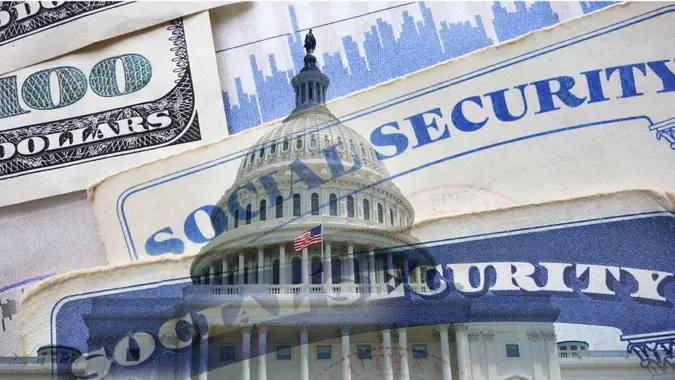4 Ways To Prioritize Your Retirement Savings in 2025 If You’ve Fallen Behind

Commitment to Our Readers
GOBankingRates' editorial team is committed to bringing you unbiased reviews and information. We use data-driven methodologies to evaluate financial products and services - our reviews and ratings are not influenced by advertisers. You can read more about our editorial guidelines and our products and services review methodology.

20 Years
Helping You Live Richer

Reviewed
by Experts

Trusted by
Millions of Readers
According to Visual Capitalist, the median retirement savings for all families is just $87,000 — enough for a couple of years, maybe three, but not a viable long-term nest egg.
If you’re among the millions of Americans who have fallen behind on saving for retirement, you can make choices starting today to bring your retirement fund back from the dead. You can take these steps to start catching up.
Grab Every Free Dollar Your Boss Is Willing To Give
According to Business News Daily, “Employee matching is the best way for employees to maximize their retirement savings.”
If you have a 401(k) and you’ve fallen behind — or even if you haven’t — make any lifestyle or budgetary changes needed to capture your full employer match. Unless you have a rich uncle who really loves you, no one else is going to give you free money twice a month to sock away for someday.
The financial services firm Empower gives the example of someone making $65,000 a year with a 100% employer match up to 5%. If they miss the full match and contribute just 2% — $1,300 from both the employee and employer — they would have $433,019 after 40 years. If they max out the match at 5% — $3,250 each — they would have more than $1.08 million in retirement.
Open an IRA If You Can’t Build a Nest Egg at Work
Not everyone has an employer-based retirement fund, but no one has an excuse not to keep as many retirement dollars as possible by saving them in a tax-advantaged account.
Charles Schwab explains that traditional IRAs shelter pre-tax money just like a 401(k). They lower your IRS bill now but require you to pay taxes on withdrawals later. With Roth IRAs, you contribute income after you give the Treasury Department its cut, which lets you withdraw funds tax-free in retirement.
Huddle with a financial advisor to decide which kind of account to open, but if you’re behind on savings, open one or the other today.
Take Advantage of Catch-Up Contributions
If you’re behind on your savings, you are not alone. The IRS allows older people to stuff extra into their retirement accounts because falling behind is the rule, not the exception.
If you’re over the age of 50 with an insufficient nest egg, you’ll probably have to make hard lifestyle choices to take advantage of catch-up contribution rules that let you add $7,500 more to your 401(k) in 2024 or $1,000 more to your IRA or Roth IRA — but you’ll thank yourself for today’s sacrifices when you retire.
Prioritize Debt and Emergency Savings — They Go Hand in Hand
According to Forbes, the S&P 500 has delivered average annualized returns of 7.58% — 10.51% with dividends reinvested.
Those are solid gains, but if you’re paying 25% in finance charges to service your credit card debt — which LendingTree says is the average APR — then you’re hemorrhaging money even when the market is up.
Forbes further reports that there is no one right strategy for making compound interest work for you while keeping it from working against you — but you must eliminate debt and save for retirement simultaneously.
One of the keys is to secure your full employer match before focusing on debt elimination — but it’s also crucial to build an emergency fund while paying what you owe and saving for retirement.
Balancing that trio of necessities is a daunting challenge — but as Forbes points out, it’s absolutely crucial to do all three because all three are connected.
If you don’t have an emergency fund, your next unforeseen expense will force you to take on debt to cover the costs. That will only further impede your ability to build a nest egg and could even force you to make early withdrawals from the retirement savings you’ve already built.
More From GOBankingRates
- Nearly 1 in 3 Americans Hit by a Costly Holiday Scam, Norton Survey Shows -- How To Avoid This
- Here's What Retirees Wasted the Most Money On in 2025 -- and How To Avoid It in 2026
- How Middle-Class Earners Are Quietly Becoming Millionaires -- and How You Can, Too
- 6 Safe Accounts Proven to Grow Your Money Up to 13x Faster
 Written by
Written by  Edited by
Edited by 

























